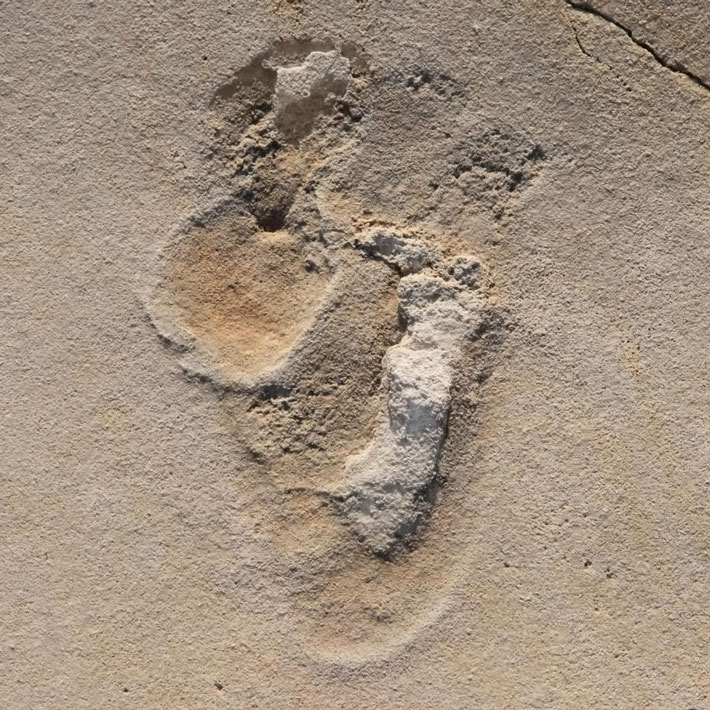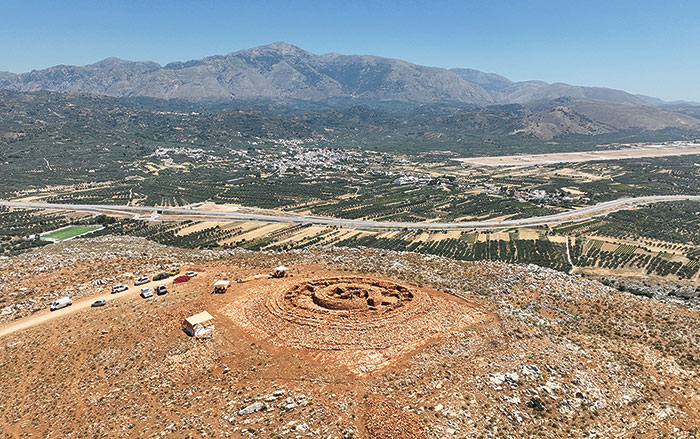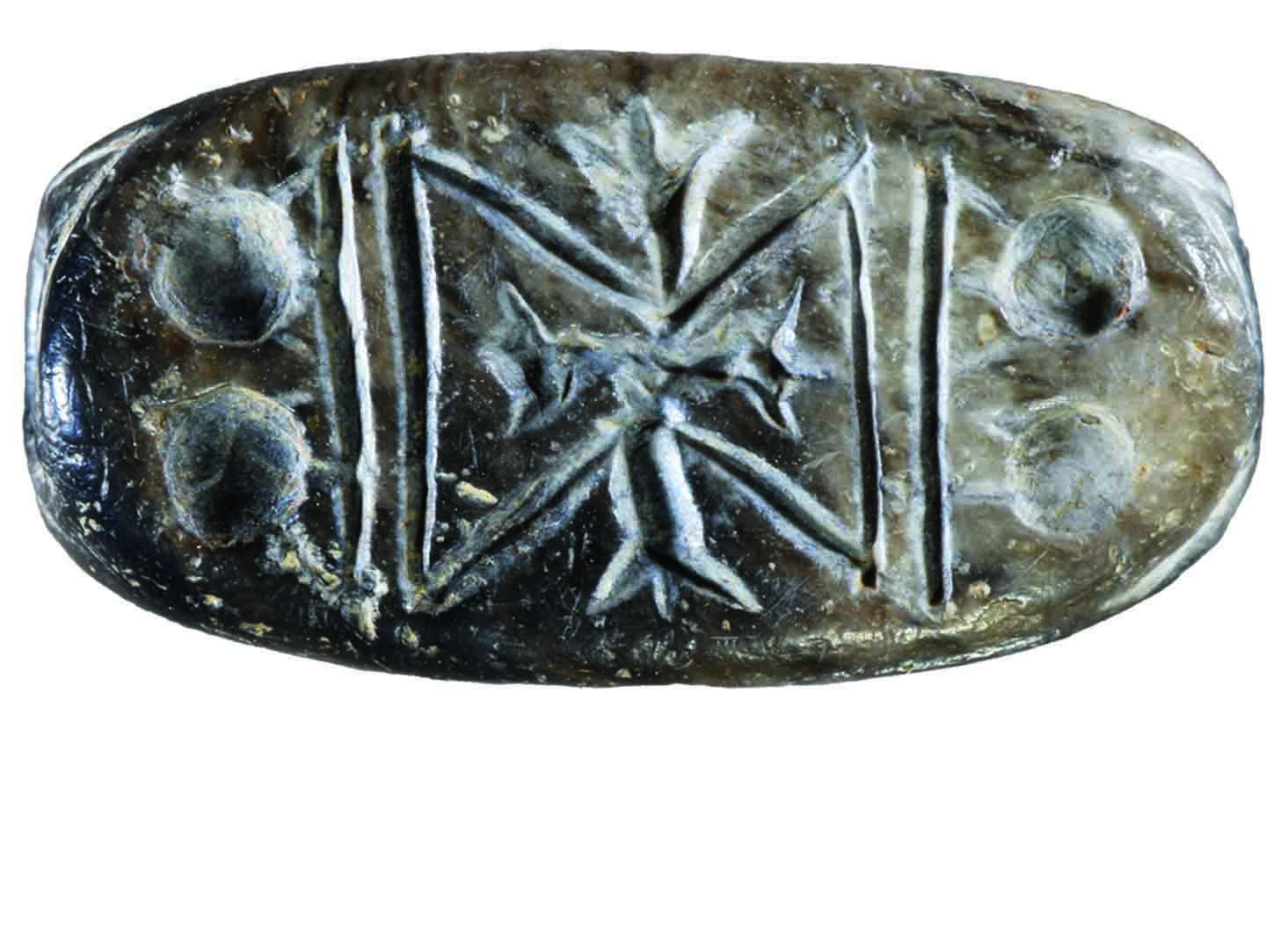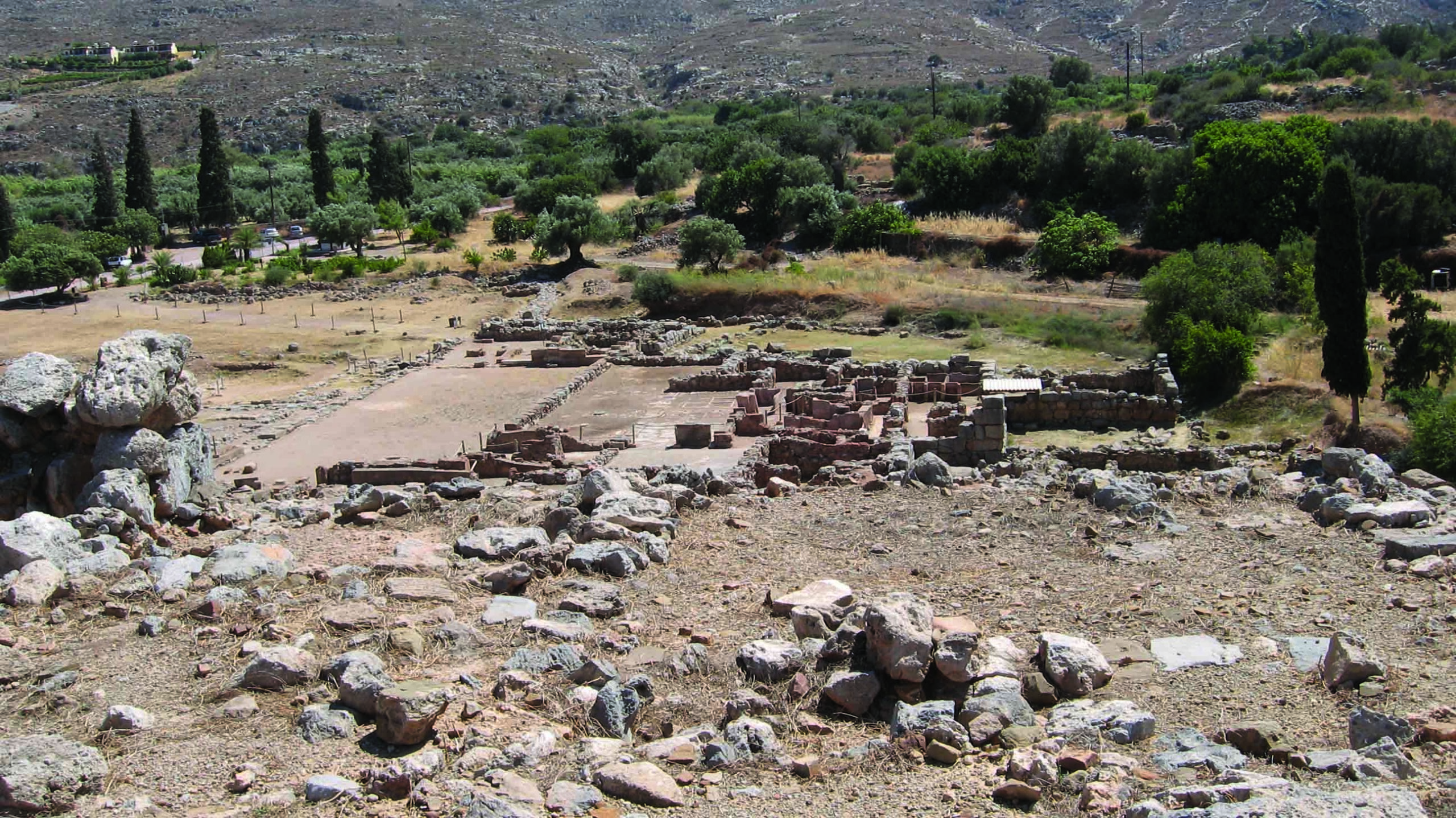
TÜBINGEN, GERMANY—According to a statement released by the University of Tūbingen, footprints found in fossilized beach sediments near the village of Trachilos on the island of Crete have been dated to at least six million years ago. The prints may have been made by the possible pre-human known as Graecopithecus freybergi, whose 7.2-million-year-old fossils were discovered in Athens, explained Madelaine Böhme of the University of Tūbingen. At that time, Crete was connected to the Greek mainland. Uwe Kirscher of the University of Tūbingen said the prints are some 2.5 million years older than tracks in Tanzania attributed to Australopithecus afarensis, and are the oldest direct evidence of a human-like foot used for walking. Per Ahlberg of Uppsala University said this foot had a ball, a strong big toe, and successively shorter side toes. When compared to Australopithecus afarensis, this foot had a narrower heel, a shorter sole, and the arch was not pronounced, he added. Read the original scholarly article about this research in Scientific Reports. To read about the oldest known hominin footprints from Tanzania, go to "Proof in the Prints."










